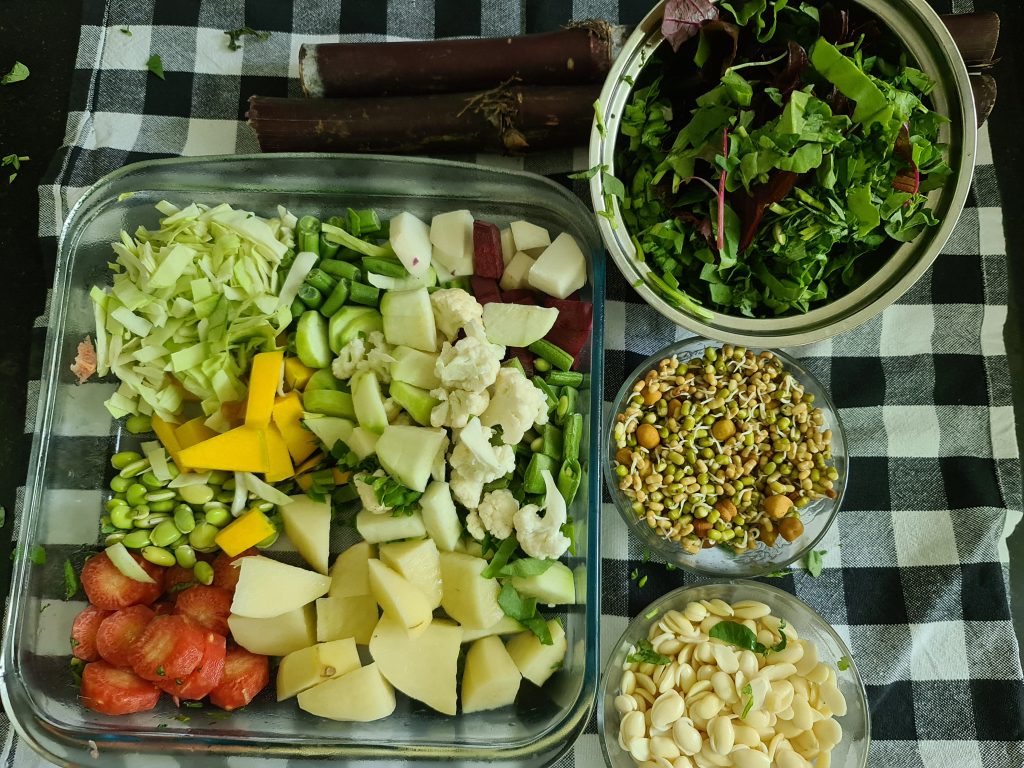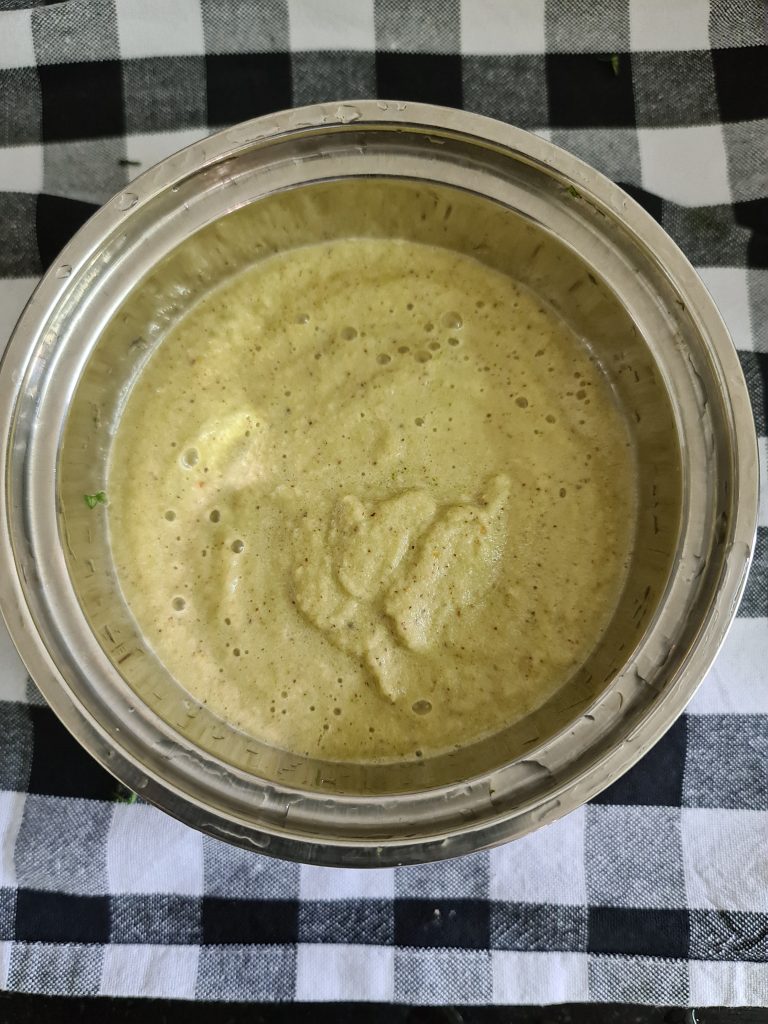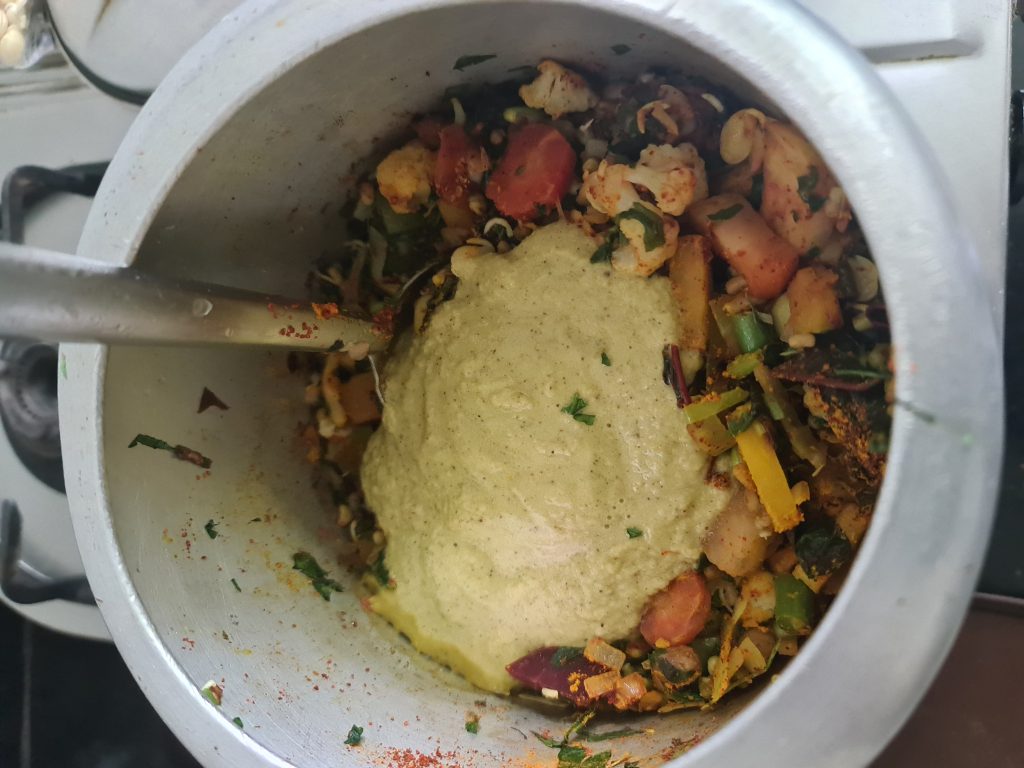Come January, and as soon as the dates for Sankranti were known, two days before the festival is when the madness would start to unfold. Makar Sankranti is a festival popular in the Southern parts of India. Lohri, Uttarayan, Maghi, Khichdi are some other names of the same festival. While the names will be different, each of the festival celebrates the onset of longer days and the passing of winter.
Gijji, as it is popularly known is a dish South Karnataka in places like Mysore, Bangalore, Hassan, to name a few cities. Back home, when people lived in a joint family, the dish was cooked in kilos. It was often packed and sent to relatives too. The gijji recipe varies from family to family and I am sharing the gijji recipe that is made at my home.
When is Gijji cooked?
This dish is cooked specifically during Sankranti to mark the onset of longer days. Another reason was of course the fact that quite of few of the vegetables were available only during the winters. My grandmother would also dice sugarcane cubes and berries into this dish adding that extra flavor. The only vegetable that is a strict no-no in this dish is okra because of its lacy texture.
Honestly, this used to be my least favourite dish as a child, but as I grew up and understood the richness and nutritional value of the gijji recipe, I took to eating a bit of it. It struck me that this was a heritage dish that has been passed on to generations. And I am assuming that my generation would be one of the last to embark on cooking this intricate gijji recipe. And a week ago, I decided to cook this dish so that my children could savour a part of my childhood cuisines.
One tip I would suggest is to prep a week before if you want to make this dish. Add one vegetable each to a cloth bag or a zip lock pouch to save the effort of going to a vegetable market and picking up vegetables.
Gijji Recipe – A Makar Sankranti Specialty
Since we are a nuclear family, I have taken roughly two tablespoons each of the vegetables that I have listed. Despite using just this limited quantity I have cooked almost a kilo of gijji. Here is a step-by-step method to make the gijji recipe.
Ingredients

Two tablespoons each of:
- Cauliflower
- Cabbage
- Potato
- Indian Squash (Tinda)
- Bottle Gourd (Lauki)
- Ridge Gourd (Turai)
- Yellow Pumpkin
- Flat beans (Val Papdi)
- Fava Beans(Averakai)
- Brinjal
- Capsicum
- A handful of raw peanuts
- 1 large onion finely chopped
- Mixed Sprouts
- You can also add dill to this, but since it has a strong flavour of its own, I avoid using it.
Other ingredients (Grind to a paste)

- One medium sized onion
- One large tomato
- 4 cloves of garlic
- 1 inch of ginger
- 2 green chilies
- 3 tablespoons of finely grated coconut
- A small bunch of coriander leaves
- 1 tsp tamarind paste
Seasoning
- ½ tsp of jeera
- Salt – 2 tsp
- Turmeric – 1 tsp
- Red Chilli Powder – 2 tsp
- Coriander powder – 1tsp
To cook the Gijji

- Make a paste of the ingredients listed in to grind to a paste and set aside. You can add a bit of water to make it a very fine paste.)
- In a pressure cooker, add 3 tbps of oil and 1 tsp of ghee. Add jeera and let it splutter.
- Now, add the finely chopped onions and fry till translucent.
- Toss in all vegetables mentioned above and stir for about 5 minutes in a low flame.
- Now add the paste and add all the seasonings minus the jeera.
- Stir for about 5 minutes till all the ingredients are mixed properly.
- Add half a cup of water. Most of the green leafy vegetables will let out their own juices so ensure that you add only half a cup of water. (Approximately 200 ml)
- Close the lid and let out one whistle on high flame.
- Lower the flame and let it cook for at least 8-10 whistles.
- Switch off the flame and do not open the pressure cooker.
- Let it cool completely.
- Mash it just a bit and stir it.
Savouring the gijji

This wholesome vegetable delight can be savored with almost ay accompaniment. Idli’s, dosa’s, appams, phulkas, jowar ki roti or chawal ke atta ki roti. My favorite accompaniment to this dish is chawal ke atte ki roti.
Gijji is literally a burst of flavours when you eat it. Packed with nutritional vegetables, rich in proteins, this dish can be frozen for at least ten days. My grandmother believed that the longer it was stored, the better it tasted. And trust me, grandmother’s can never be wrong. Can they?
Note: If you are someone who doesn’t add onions, ginger and garlic to your food, you can omit the ingredients. It will still taste delicious!
The article was published first on Quint Fit. You can view it here.
Nice n healthy too